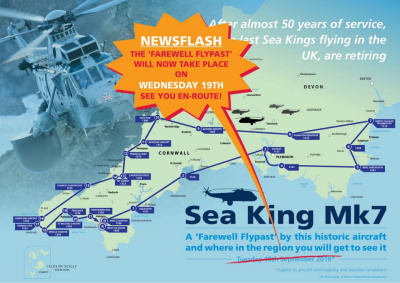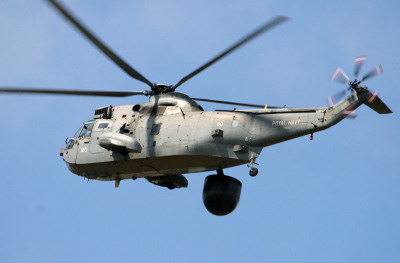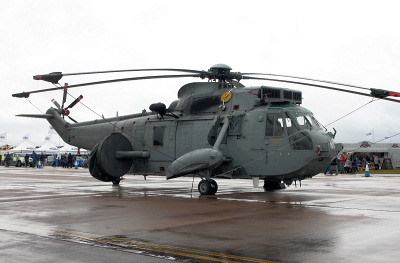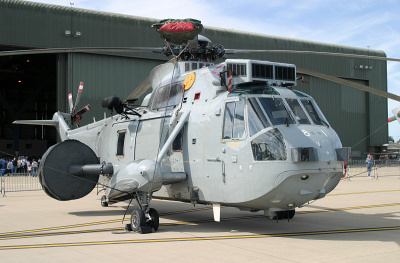
 |
Sea King ASaC.7 Farewell Flypast
A flypast by two Sea King ASaC.7 helicopters, from 849 Naval Air Squadron, took place over Devon and Cornwall on Wednesday 19th September 2018. This marked the retirement of the Sea King which has seen 49 years of service in the UK.

The farewell flypast had been intended to take place on the 18th September but was postponed due to poor weather. The flypast did take place the following day despite the rain, low cloud and poor visibility.
The three-hour flypast took place from RNAS Culdrose, as far east as Teignmouth, over the wilds of Dartmoor and Bodmin Moor, the northern Cornish resorts of Padstow, Newquay and St Ives, before a final sight of Land's End, Penzance, Mounts Bay and back to Culdrose.
The two Sea King ASaC.7 helicopters were ZE420 crewed by Commander Chris Hughes, Lt Cdr 'Tank' Murray, Lt Cdr Richard Lewis and Lt Ben Selwood, and ZA126 crewed by Lt Cdr Ian Chudle, Lt Cdr Matt Round, Lt Dale Eyers and Lt Martin Pittock. The Sea Kings were accompanied by a Merlin helicopter.
These helicopters will make one last flight from Culdrose to HMS Sultan in Gosport for disposal.
Sea King helicopter
The Westland Sea King helicopter was a British licence-built version of the American Sikorsky S-61 helicopter. It was fitted with Rolls-Royce Gnome engines, British-made anti-submarine warfare systems, and a fully computerised flight control system.
It was operated in many different roles by the Royal Navy and the Royal Air Force such as anti-submarine warfare, Commando Assault, Search & Rescue, General Duties, and Airbourne Early Warning. The Sea King served in the Falklands War, the Gulf War, the Balkans conflict, the Iraq War and the Afghanistan War.
Sea King Airbourne Early Warning
The Royal navy lost their Airbourne Early Warning (AEW) capability when the Fairey Gannet was withdrawn after the fleet carriers were decommissioned in 1978.
During the Falklands conflict of 1982, the Royal Navy were without an AEW platform which proved very costly. Two Sea King HA2s were quickly modified in 1982 with the addition of the Thorn-EMI ARI 5980/3 Searchwater LAST radar attached to the fuselage on a swivel arm and protected by an inflatable dome, allowing the radar to be lowered below the fuselage during flight and for it to be raised for landing. A further eight HAS2s were later modified and known as the AEW2. These Sea King AEW helicopters were nicknamed the 'Baggers' due to the large black sack housing the powerful radar.
The original baggers had one major flaw - they couldn't track hostile aircraft over land, a problem rectified when the much-improved Mk7 entered service in 2001. This variant was initially referred to as the Sea King AEW7, but renamed ASaC7 (Airborne Surveillance and Control Mk.7) just before the In Service Date. The Sea King ASaC7 was based around the improved Searchwater 2000AEW radar which could not only detect aerial threats, but they could also track vehicle movements on the ground and this proved very useful during the Iraq War. Thirteen Sea King ASaC7 were operated by the Royal Navy.
The Sea King ASaC7 will be replaced by Crowsnest, a tactical sensor suite which can be fitted to any Royal Navy Merlin HM2 helicopter. Ten Crowsnest pods are planned and the system is expected to have initial operating capability (IOC) at RNAS Culdrose in 2019. Merlin helicopters with Crowsnest will provide Airbourne Early Warning and will be operated from the new aircraft carriers HMS Queen Elizabeth and Prince of Wales from 2020 onwards.
 |
 |
 |